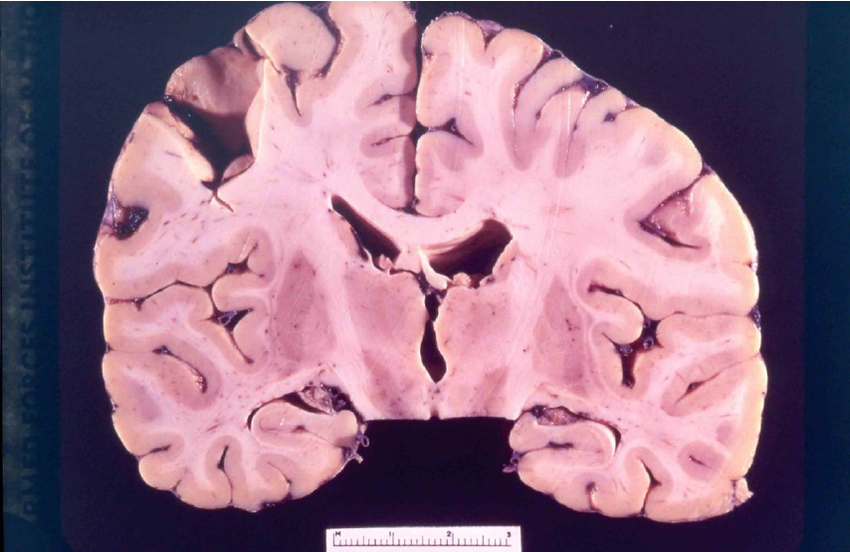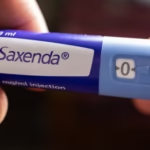Gerstmann-Sträussler-Scheinker (GSS) prion disease is a mysterious illness. It is a very rare disorder. GSS is also invariably fatal. It causes progressive damage to the brain.
This condition belongs to a unique group of diseases. These are caused by abnormally folded proteins. These proteins are called prions. Understanding GSS is vital. It helps affected individuals and their families. It also advances research into all neurodegenerative conditions.
What is Gerstmann-Sträussler-Scheinker (GSS)?
GSS prion disease is often called simply GSS. It is a hereditary prion disease. This means it is typically passed down through families. A specific genetic mutation causes it. The central issue involves the prion protein (PrP). Normally, PrP exists in a harmless form. This is called cellular prion protein (PrPC).
However, in GSS, this protein misfolds. It changes into an abnormal, disease-causing form. This is called scrapie prion protein (PrPSc). This misfolded PrPSc then acts as a template. It forces other normal PrPC proteins to misfold. This creates a chain reaction in the brain.
The Genetic Basis of GSS Prion Disease
This chain reaction leads to accumulation. Insoluble PrPSc aggregates build up. These toxic clumps harm neurons. They ultimately cause neuron death. The genetic mutations linked to GSS are found in the PRNP gene. This gene provides instructions for making the prion protein. Different mutations within this gene exist. They can change how the disease appears. They also affect how it progresses.
Knowing the specific mutation is important. It helps in diagnosis. It also aids in prognosis. GSS has an autosomal dominant inheritance pattern. Only one copy of the mutated gene is enough to cause disease. Children of an affected parent face a 50% chance. They can inherit the mutated gene. They may then develop GSS.
Recognizing GSS Prion Disease Symptoms
Symptoms of GSS show progressive neurological decline. However, their specific order can vary. This depends on the underlying PRNP gene mutation. The disease usually appears in middle age. This is often between 30 and 60 years old. Earlier or later onset is possible. Early symptoms frequently include cerebellar ataxia. This means a lack of muscle coordination.
It affects balance and gait. Speech can become slurred. Individuals may feel unsteady. They might have difficulty walking.
The Progression of GSS: From Ataxia to Dementia
As GSS progresses, other impairments emerge. Dementia becomes increasingly prominent. This is a decline in cognitive abilities. Memory, thinking, and reasoning are affected. Patients struggle with daily tasks. Personality changes are common. They may become disoriented. Other symptoms include dysarthria. This is difficulty speaking due to muscle weakness.
Nystagmus involves involuntary eye movements. Muscle rigidity is also a common sign. Over time, severe motor impairments develop. Individuals may become bedridden. The illness duration varies widely. It can range from a few years. It can extend to over a decade. The outcome is always fatal. Death typically results from complications. Pneumonia or other infections are frequent causes.
Diagnosing GSS Prion Disease: A Complex Path
Diagnosing GSS prion disease is challenging. It is very rare. Its symptoms resemble other neurodegenerative disorders. A definitive diagnosis requires multiple steps. It often combines clinical evaluation.
Genetic testing is crucial. Neuropathological examination is usually needed. A neurologist first performs a thorough exam. They assess the patient’s symptoms. They look for characteristic neurological signs. A detailed family history is also vital. This hereditary aspect is a key indicator.
Genetic testing of the PRNP gene is critical. Identifying a pathogenic mutation confirms the GSS diagnosis. However, a negative genetic test does not always rule it out. Some cases might stem from novel mutations. Some may be sporadic, though this is rare for GSS. Magnetic Resonance Imaging (MRI) of the brain may show changes.
These include atrophy or signal abnormalities. Yet, these findings are not specific to GSS. Cerebrospinal fluid (CSF) analysis may also be done. It searches for markers of neuronal damage. Currently, no specific CSF biomarkers are uniquely diagnostic for GSS. Ultimately, a definitive diagnosis of GSS often relies on post-mortem examination. Brain tissue analysis reveals characteristic spongiform changes. It also shows the presence of abnormal prion protein deposits.
Current Treatment and Research for GSS
Currently, there is no known cure for GSS. No effective treatment exists either. Management primarily focuses on supportive care. The goal is to alleviate symptoms. It aims to improve the patient’s quality of life. This can involve physical therapy. It helps maintain mobility. Speech therapy addresses communication issues.
Occupational therapy assists with daily living activities. Medications may be prescribed. They manage specific symptoms. Examples include muscle spasms or sleep disturbances. However, these interventions do not halt the disease’s progression. They do not reverse the underlying damage.
Despite these limitations, significant research is ongoing. Scientists are working hard to understand GSS. They are developing therapeutic strategies. Research investigates preventing PrP misfolding. It also explores clearing existing PrPSc aggregates. Protecting neurons from prion toxicity is another focus. Gene-editing technologies, like CRISPR, are being explored. They offer potential to correct underlying PRNP gene mutations.
Developing biomarkers for early diagnosis is also a major goal. These would also help monitor disease progression. Advances in prion biology offer hope. Understanding neurodegenerative processes could lead to breakthroughs. This research could benefit GSS and similar conditions.
Living with GSS: Support and Future Outlook
A diagnosis of GSS prion disease is devastating. It brings immense emotional challenges. It also presents practical difficulties. Support groups can provide invaluable resources. Patient advocacy organizations offer help. They connect affected individuals. They offer emotional support and practical advice.
Genetic counseling is crucial for families. Especially for those with a GSS history. It helps them understand inheritance risks. It aids in making informed family planning decisions.
While the prognosis for GSS remains grim, research offers a beacon of hope. Scientists worldwide are dedicated. They work to unravel prion disease complexities. Increased public awareness is paramount. Funding for research is essential. This will accelerate the development of effective treatments. The ultimate goal is to find a cure.
Every step forward in understanding prion diseases matters. It brings us closer to a future. A future where these devastating illnesses can be prevented. Or, at least, effectively treated. The commitment to combating GSS prion disease remains strong.








